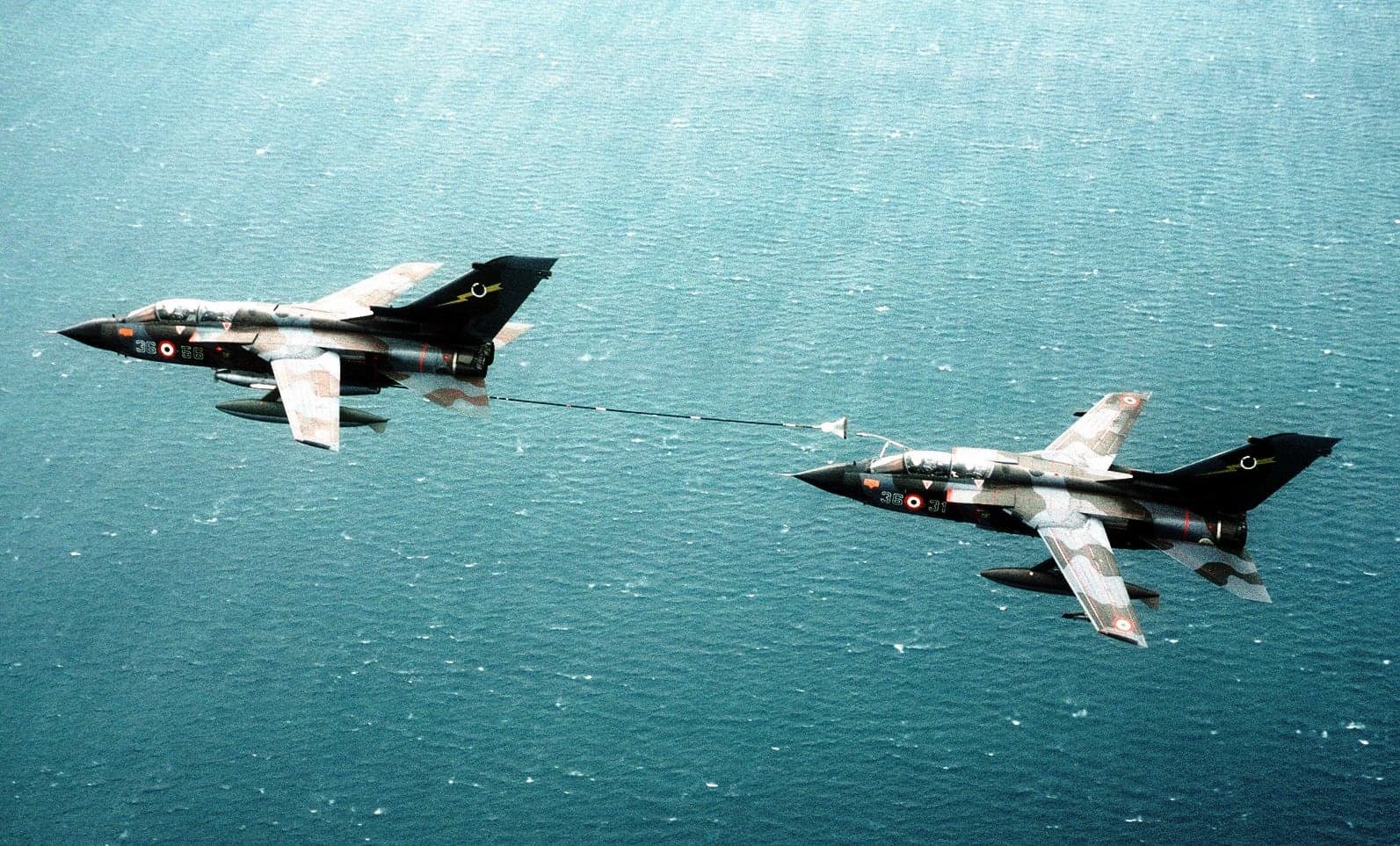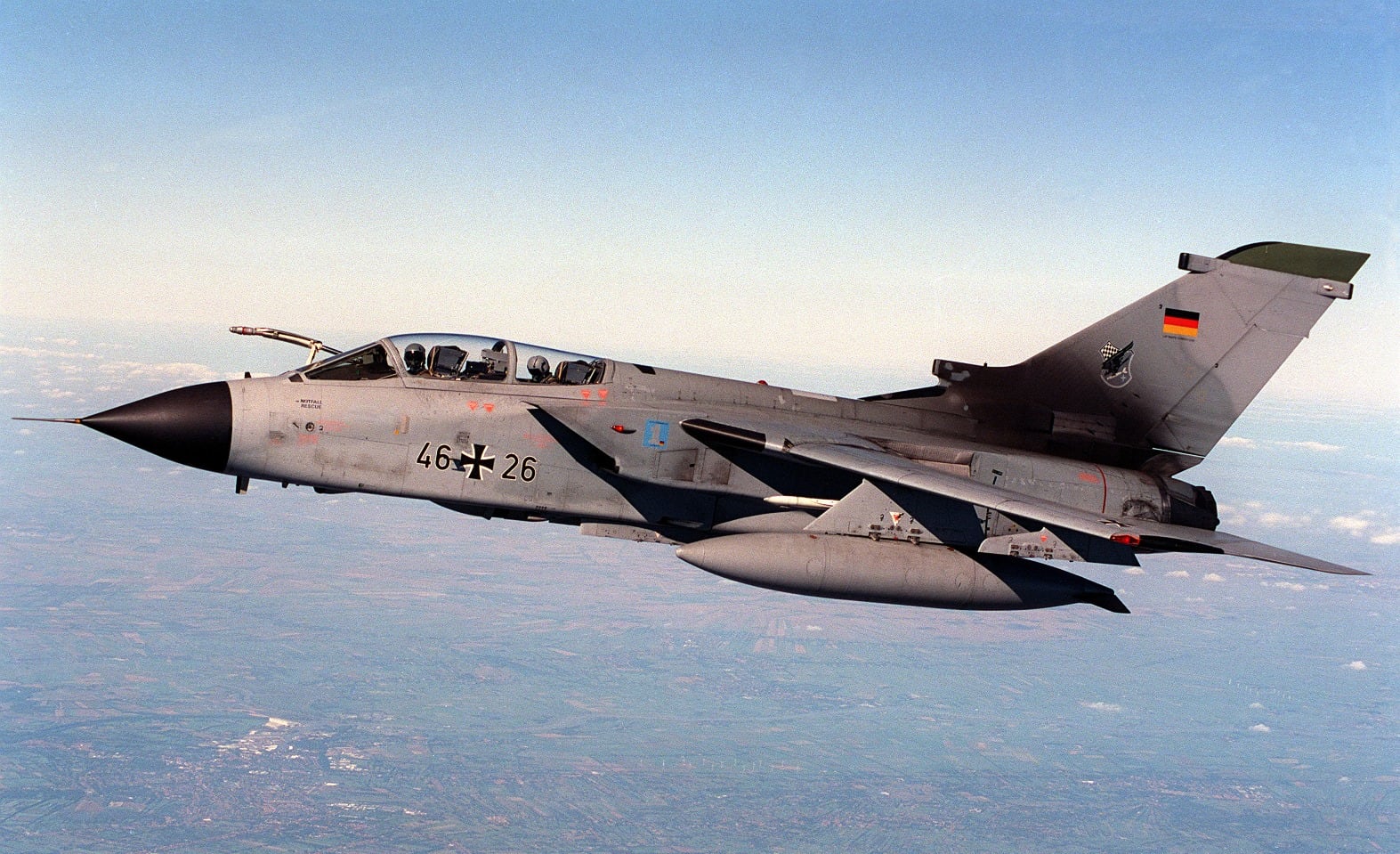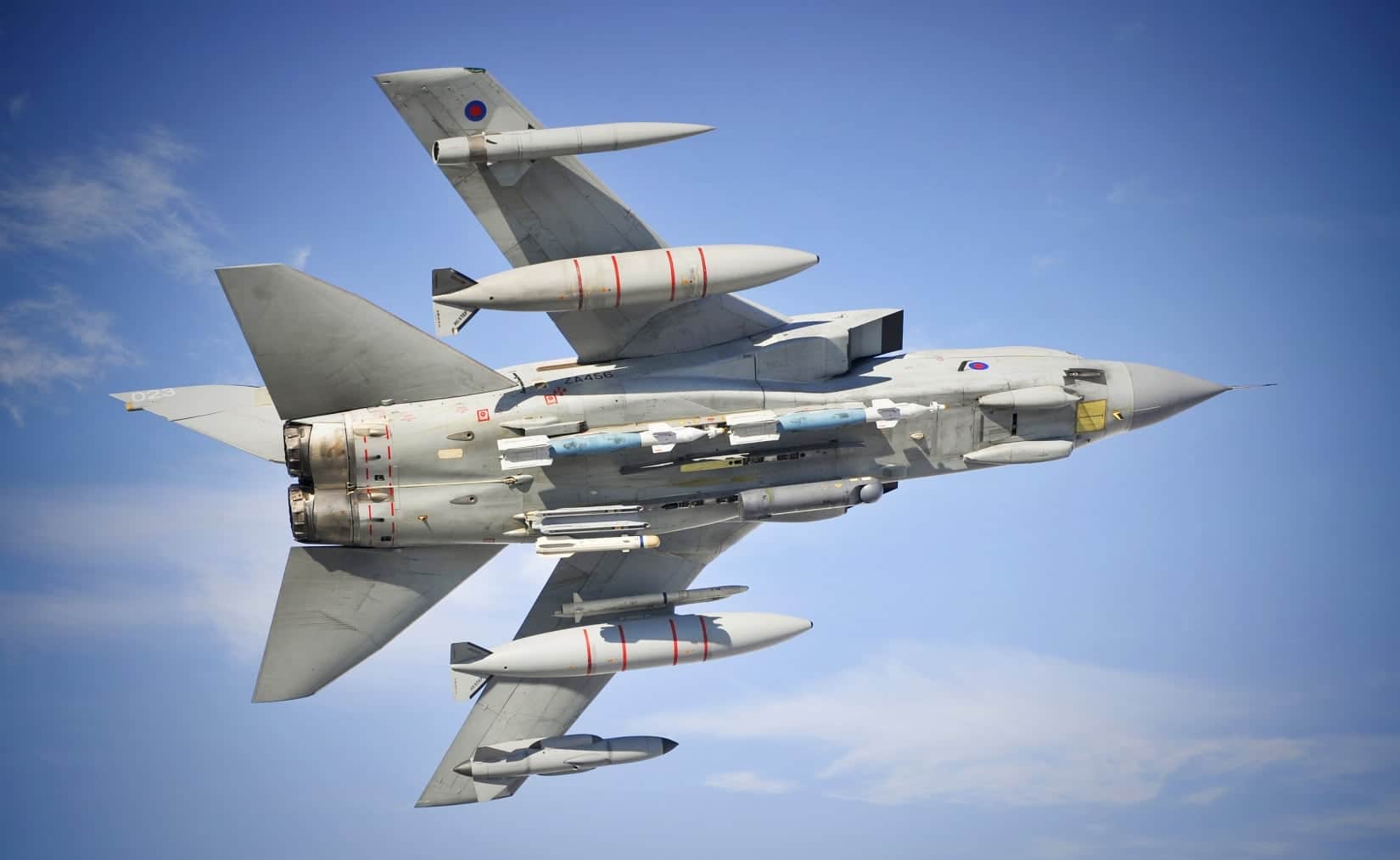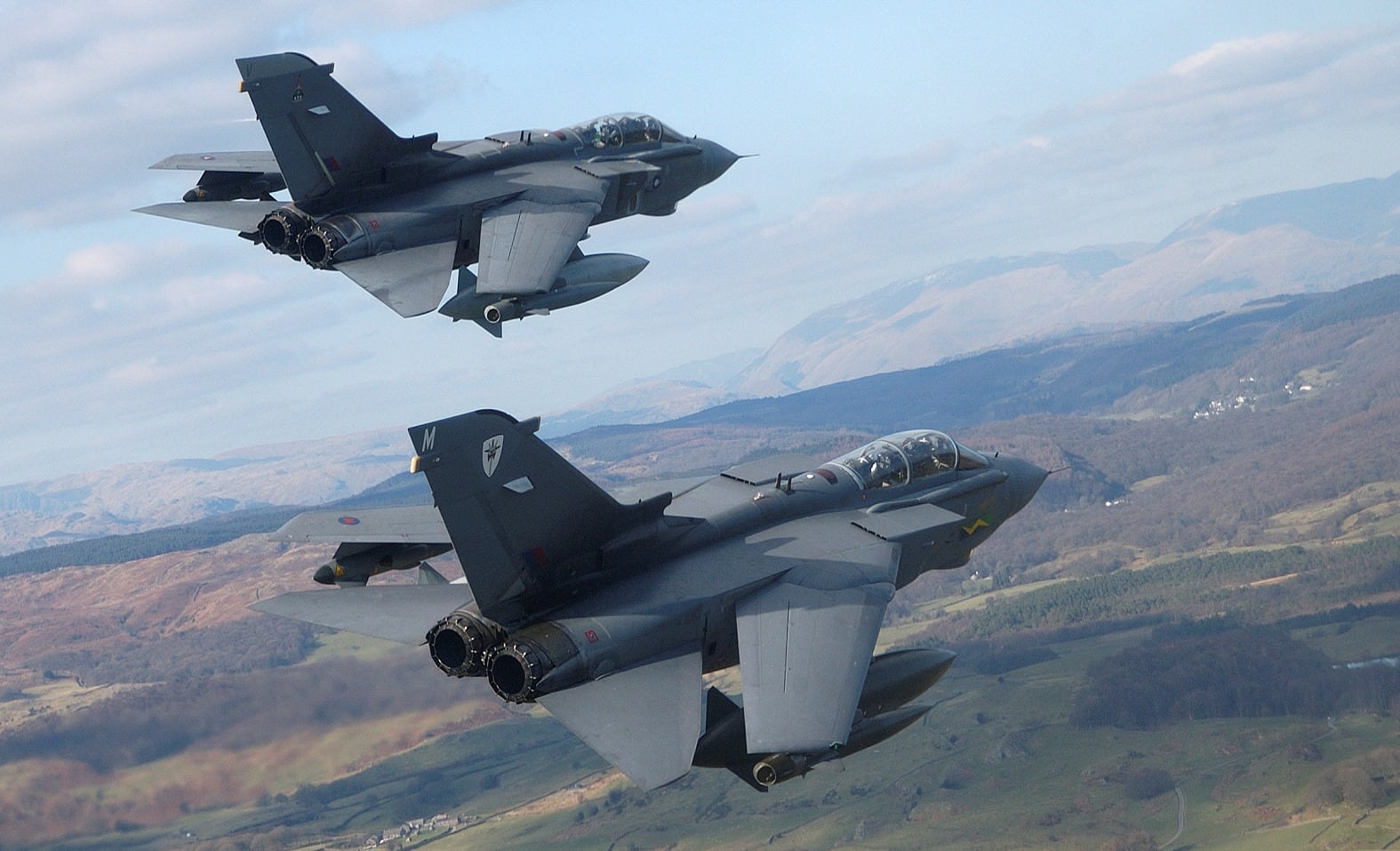Panavia Built the Tornado for Germany, Italy, and the UK to Fly and Fight
The Panavia Tornado was jointly developed beginning during the late 1960s by Italy, the United Kingdom, and West Germany as the answer to a requirement for a Multi-Role Combat Aircraft (MRCA). European NATO countries had been flying several American-designed jets for many years by that point. The RAF had looked at the General Dynamics F-111K but decided to back out. The consortium Panavia was made up of British Aerospace, MBB, and Aeritalia. The only operators of these twin engine swing-wing jets have been the Royal Air Force, the Italian Air Force (Aeronautica Militare), the German Luftwaffe (and Marineflieger or Navy), and the only export customer for the jet- the Royal Saudi Air Force.

The International Fighter Extraordinaire
First flown on 14 August 1974, the Tornado entered service with the RAF and the Luftwaffe in 1979 with the Italians following suit in 1981. A total of 992 Tornado jets were produced by Panavia between 1978 and 1988. Tornados were produced in several variants, but they broke down between two fairly distinct types- ground attack or interdiction/strike (IDS) and interceptor or air defense variant or ADV. Tornado IDS variants include the GR1, GR1B, GR4, and the GR1A/GR4A. There is also a Tornado electronic combat/reconnaissance or ECR variant. All Tornados are crewed by two, have manually controlled swing wings, and are powered by a pair of Turbo-Union RB199 three spool turbofan engines equipped with both afterburners and thrust reversers.

The Nose Knows
Tornado ECRs are operated by Germany and Italy in the suppression of enemy air defenses (SEAD) role. The German Navy (Marineflieger) replaced their F-104G Starfighters with Tornados. EGRs are equipped with specialized radar warning receivers and reconnaissance sensors and can fire the Texas Instruments/Raytheon AGM-88 High Speed Anti-Radiation (HARM) missile. The RAF utilizes Tornado IDS jets in the role of the ECR. All Tornado IDS and ECR variants can be identified by the types’ shorter nose cone.

The Air Defence Variant
The Tornado ADV, designated either F2, F2A, F3, or EF3, has been operated by the RAF, Italy, and Saudi Arabia. While the ADV is said to lack agility, the jet was not designed or intended to dogfight. It is a straight interceptor, much like the Convair F-106 Delta Dart. The ADV does share about 80% of its parts with IDS variants, but it is equipped with improved RB199 Mk.104 engines giving it superior acceleration, the distinctive longer nose section, greater fuel capacity, and the GEC-Marconi AI.24 Foxhunter radar, and an inflight refueling probe. The ADV is also an excellent SEAD platform.

Toting the Latest NATO Ordnance
Tornados can employ the latest NATO armament, including the Raytheon AIM-9 Sidewinder and AGM-65 Maverick air-to-ground missiles along with the Hughes/Raytheon AIM-120 Advanced Medium Range Air to Air Missile (AMRAAM), RAF AIM-132 Advanced Short Range Air to Air Missile (ASRAAM), Brimstone, Storm Shadow, or ALARM anti-radiation missiles. Tornados can also deliver the Paveway II, III, and IV series of laser guide bomb (LGB) munitions and the latest RAF ordnance options. RAF and Italian Tornados were highly effective during their combat in the Gulf War.

This awesome film about the Tornado in RAF service was uploaded to YouTube by BrySkye. Enjoy!
[youtube id=”rHjU0sdHRV8″ width=”800″ height=”454″ position=”left”]

I worked in Camberley in the 70s, there was a prototype in a building in the town.